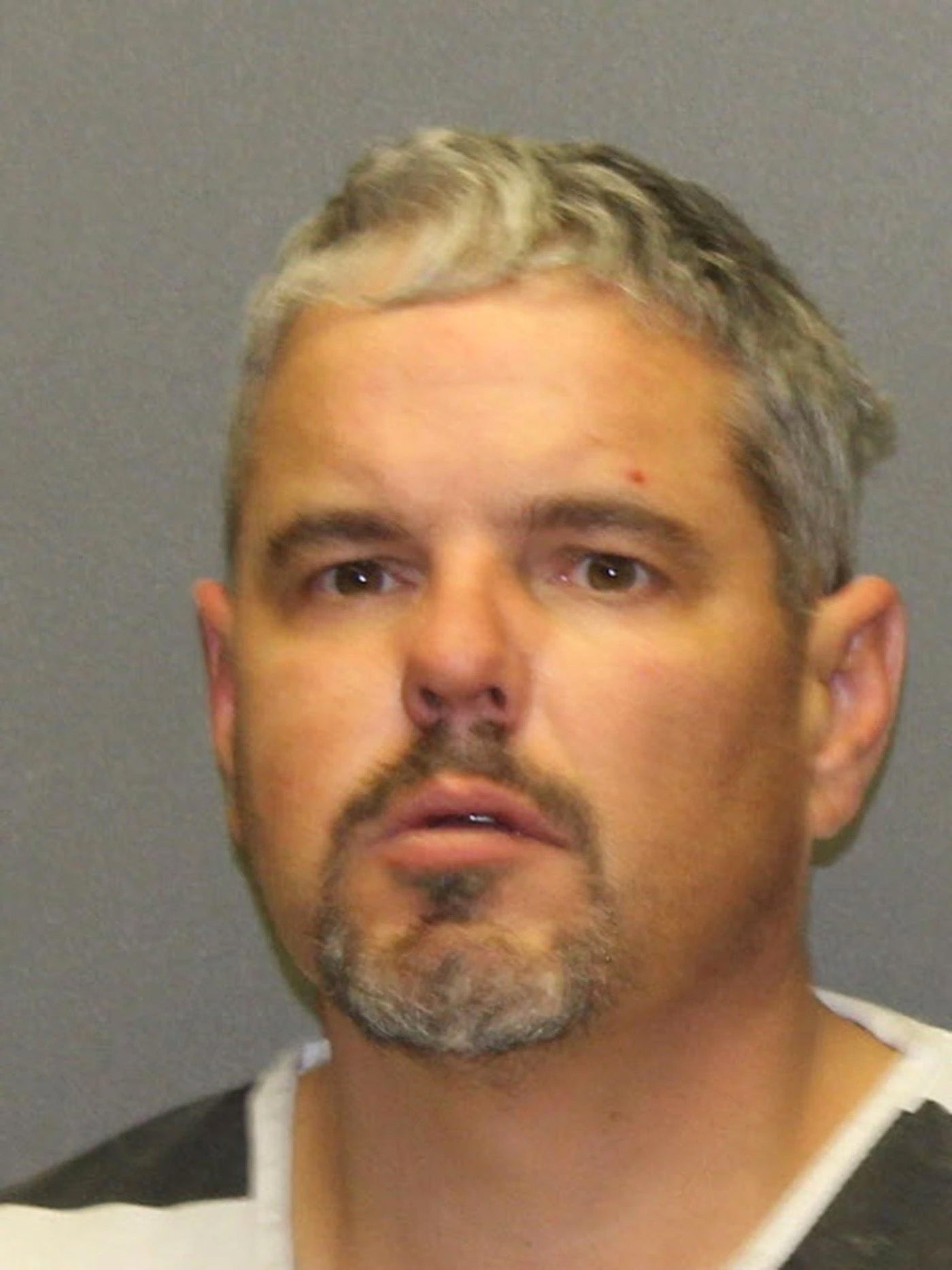On May 27th, 28-year-old miscreant Rondale Turner was pulled over in Guymon, Oklahoma, for reckless driving. But instead of complying with the officer, Turner drove off, eventually abandoning his vehicle and trying to make a run for it before the officer was able to locate him in a field and arrest him. While he was being booked at the county jail, however, Turner slipped away again, stealing a K-9 police cruiser with a police dog in the back.
In order to locate Turner and the stolen police cruiser, the Guymon PD turned to OnStar Emergency Services. The vehicle’s location pinged, leading officers to discover the abandoned vehicle — with the police dog inside, but with Turner and an AR-15 assault rifle missing. A police bulletin described him as “armed and dangerous,” adding that he “was last known to still be wearing handcuffs.” Over the next two weeks, Turner was reportedly involved in five vehicle pursuits.

Finally, on June 11th, U.S. marshals discovered him at a residence where he’d decided to hole up. The local sheriff’s office dispatched their SWAT team to extricate him. They tried to gas him out with chemical agents, but with no luck. Next, they sent a robot into the house to find him. But again, no dice. Out of options, they raided the residence. Once more, though, Turner had seemingly disappeared. Until, that is, a U.S. marshal heard a sound coming from inside the walls. It was Turner — hidden and armed with a handgun. Still, the marshals found no need to use their weapons.
Turner was arrested and taken into custody, safely and unharmed.
In November 2019 in New Cumberland, Pennsylvania, police received a call about a domestic disturbance. Thirty-one-year-old Mark Boisey had broken up with his girlfriend via text. She accepted the breakup, locked her door and went to bed, only to wake up to find Boisey kicking in her bedroom door. He then dragged her around by her hair, strangled her and pistol-whipped her. Luckily, at some point, she was able to hit him in the face, knock free his gun and flee the home.

Giving chase, Boisey retrieved his firearm and fired it at her as she ran to a neighbor’s house. He continued to fire shots into the home once she got there. Around 12:30 a.m., Boisey walked out to meet the first officer who had arrived on the scene. Quickly, however, he turned his weapon on the cop and began firing again. Three other officers pulled up at roughly that same moment. Boisey shot at them, too — about 40 to 50 rounds in all. But they never returned fire, preferring to “duck for cover.” For the next seven hours, Boisey remained in an armed standoff with police. Finally, as tensions mounted, officers entered the residence. Again, though, no shots were fired.
Boisey was arrested and taken into custody, safely and unharmed.
In January in Harford County, Maryland, a man who had warned local police that he’d shoot them if they responded to a domestic violence dispute at his home made good on his threat. Only the call was for animal cruelty. Forty-three-year-old Benjamin Murdy had shot his neighbor twice — once in the leg and once in the groin — killing a dog in the process. From there, a 90-minute shootout ensued between Murdy and 30 deputies. Murdy fired an estimated 200 rounds at the officers. In response, the cops brought out an armored, military-style police vehicle, as well as helicopters. But as the Baltimore Sun noted, “Though police responded in force and ordered the street’s residents to shelter in place, no deputies fired a single round in return.”

Murdy was arrested and taken into custody, safely and unharmed.
In May, 6-foot-4 University of Connecticut student Peter Manfredonia was the focus of a multi-state manhunt. He was on the run for six days after he allegedly committed two murders. The 23-year old was originally on his way to a woman’s house via motorcycle, reportedly armed with a small samurai sword or possibly a machete, when he decided to abandon his motorcycle and start walking.
The young man encountered an older local riding an ATV. The man offered to give Manfredonia a lift back to his motorcycle, but the friendly scene quickly went south as Manfredonia attacked and killed the 62-year-old and wounded an 80-year-old neighbor who rushed over to help. Next, Manfredonia broke into a nearby home and stole some guns, food and the keys to a truck. Two days later — and about 70 miles away — Manfredonia crashed the truck. He walked to the home of an acquaintance, a fellow 23-year-old, and shot him in the head, kidnapping the murdered man’s girlfriend and stealing his car as a replacement for the truck.

A team of local police found Manfredonia at a Maryland truck stop. A Connecticut detective was updating a multi-jurisdictional team on Manfredonia’s height when one of the cops noticed a 6-foot-4 man standing 20 feet away who matched the suspect’s description.
Manfredonia was arrested and taken into custody, safely and unharmed.
In December 2018, 51-year-old Jerry York kept calling 9-1-1. Numerous deputies working the dispatch desk told him to stop, but he didn’t listen. Finally, they sent someone out to his house, only to discover that he and his vehicle were gone. During a subsequent traffic stop, York stepped out of his truck and got into a fight with two other deputies. He took one of their batons, beat them with it and then stole their patrol car. The slow-speed chase that followed ended when York crashed into another police vehicle, injuring a third deputy.
York was arrested and taken into custody, safely and unharmed.
In February 2017, two men wearing tactical gear and armed with assault rifles and handguns walked into a police station in Dearborn, Michigan. An officer inside drew on the two men, ordering them to put down their weapons or he’d be forced to shoot to kill. There had been a shootout in that same police precinct six years earlier, but that didn’t happen this time around. Once more, not a single shot was fired.
The two men were arrested and taken into custody, safely and unharmed.
In August 2019 in Aurora, Colorado, 23-year-old Elijah McClain went for a walk to the store to grab an iced tea for his brother. He was wearing a ski mask since he suffered from anemia and often grew cold. This, however, unnerved a fellow local, who called 9-1-1. Soon thereafter, three police officers pulled up on the vegetarian violinist who liked to visit animal shelters to play music to soothe the cats.
The cops decided he needed to be detained and tried to handcuff him. One of them put him in a carotid chokehold. Roughly 15 minutes after they first began to physically subdue McClain, EMTs arrived. The paramedics were asked to sedate him. They opted to use ketamine, but they administered far more of the sedative than was necessary. McClain suffered cardiac arrest in the ambulance. Within a few days, he died.

McClain’s final words were: “I can’t breathe. I have my ID right here. My name is Elijah McClain. That’s my house. I was just going home. I’m an introvert. I’m just different. That’s all. I’m so sorry. I have no gun. I don’t do any of that stuff. I don’t do any fighting. Why are you attacking me? I don’t even kill flies. I don’t eat meat! But I don’t judge people, I don’t judge people who do eat meat. Forgive me. All I was trying to do was to become better. I will do it. I will do anything. Sacrifice my identity, I’ll do it. You all are phenomenal. You are beautiful and I love you. Try to forgive me. I’m a mood Gemini. I’m sorry. I’m so sorry. Ow, that really hurt. You all are very strong. Teamwork makes the dreamwork. [Cries] Oh, I’m sorry, I wasn’t trying to do that. I just can’t breathe correctly.”
He then vomited and passed out.
There was no need for the use of force to subdue McClain. It wasn’t like he fired 200 rounds at the officers. He didn’t steal their police car with their police dog in the back. He didn’t crash into a police cruiser and nearly kill or maim a deputy. He hadn’t been involved in a domestic violence call. He didn’t march into a police station while armed with an assault rifle, looking to confront cops. He didn’t stab an elderly man with a samurai sword. Elijah McClain didn’t even have a weapon.
The biggest difference, of course, between McClain and everyone else here is that McClain was Black — and that somehow transformed him into a violent threat in the eyes of the law. His Blackness was deemed inherently dangerous, so much so, it convinced multiple veteran police officers that an unarmed, underweight, anemic vegan violinist posed an immediate threat to their lives. His Blackness was why they felt the need to violently subdue him. His Blackness presented such a dire and imagined threat that multiple armed cops used their body weight to restrain a frail cat lover, to choke him and deny him the air to fight back, and they kept that pressure on him, until finally, he lost consciousness.
That was it. His black skin was considered punishable by reasonable use of deadly force. The motive for his murder was just that skin deep. The unmistakable Blackness of Elijah McClain was for him (and for countless others like him: George Floyd, Michael Brown, Tamir Rice) the difference between life and death.
So while it will take time to defund or demilitarize the police, we certainly know what non-lethal policing of Black men and women can look like. Because we see it right now, all the time, with white people. In fact, it doesn’t take much either. All officers really need to do is open their eyes — and minds — enough to see a suspect’s humanity.

